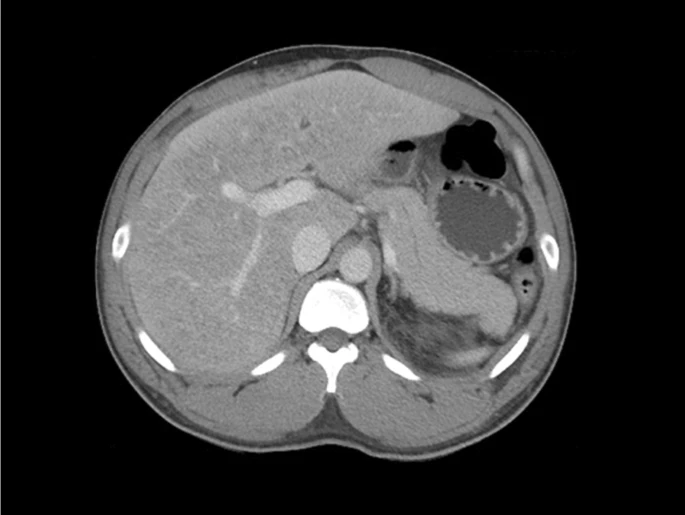Bodybuilders commonly use supplements to enhance their athletic performance and aesthetic appearance. The supplements include growth hormone, and anabolic androgen steroids AAS. However, due to lack of understanding and awareness, is detrimental to athletes’ mental and physical health. The unregulated use of these substances can be alarming for bodybuilders, resulting in organ-specific pathologies, for example, pancreatitis. Although the prevalence of acute pancreatitis across the world is unknown, the annual estimates range from 5 and 80 per 100,000 people. The record rate in the US and Finland is better. In addition, the most common presentation is severe epigastric pain that radiates to the back.
Acute Pancreatitis: Case Presentation
This case of a 31-year-old, previously healthy, Arab male bodybuilder, is the first report of acute pancreatitis. It is linked with the recreational use of anabolic–androgen steroids, subcutaneous growth hormone, and clenbuterol.
He presented with acute abdominal pain with nausea. Furthermore, the pain radiated to his back. He wasn’t using alcohol and tobacco. However, he was using multiple drugs for bodybuilding purposes along with multiple vitamin supplements.
His laboratory tests showed a normal WBC count and a high level of C-reactive protein. Moreover, there was a minimal elevation in aspartate aminotransferase and total bilirubin. His remaining liver tests were in normal ranges with an elevation in amylase and lipase. The patient did not have hypertriglyceridemia and hypercalcemia and no recent infections either. Moreover, he had not undergone any abdominal procedures, scorpion exposure and trauma.
Doctors also did imaging and lab investigations, which were negative for biliary disease and IgG4 disease. CT Abdomen showed hepatomegaly along with diffuse thickening and oedema of the pancreatic body and tail in addition to pancreatic fat stranding. Furthermore, his abdominal ultrasound showed slight hepatomegaly without any evidence of cholelithiasis.
Hence, doctors made a diagnosis of drug-induced pancreatitis and treated him with aggressive IV hydration and management of pain. Moreover, he avoided the use of these drugs further, with no future complications at his one-year follow-up.




